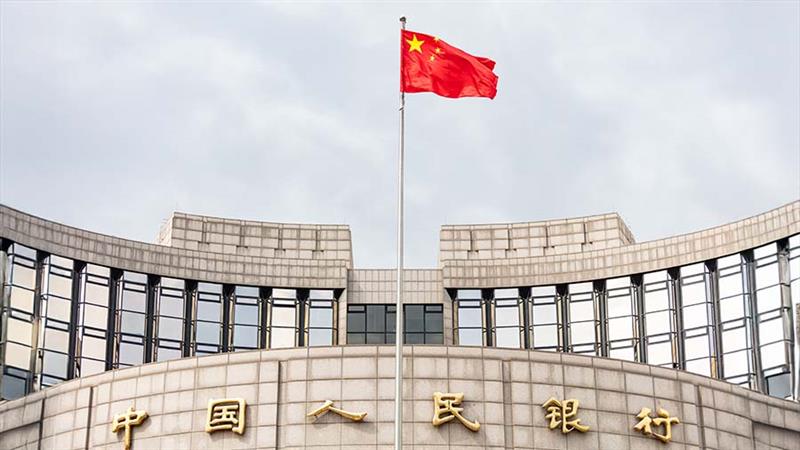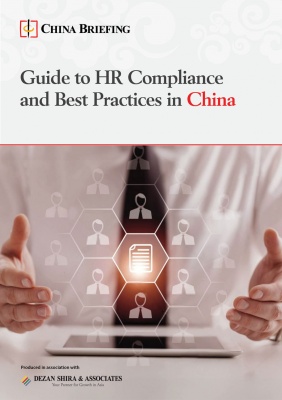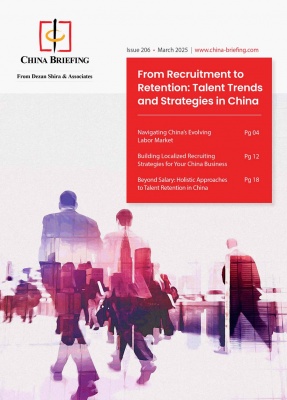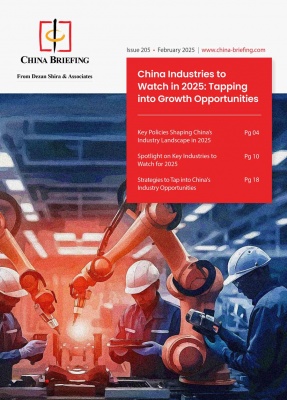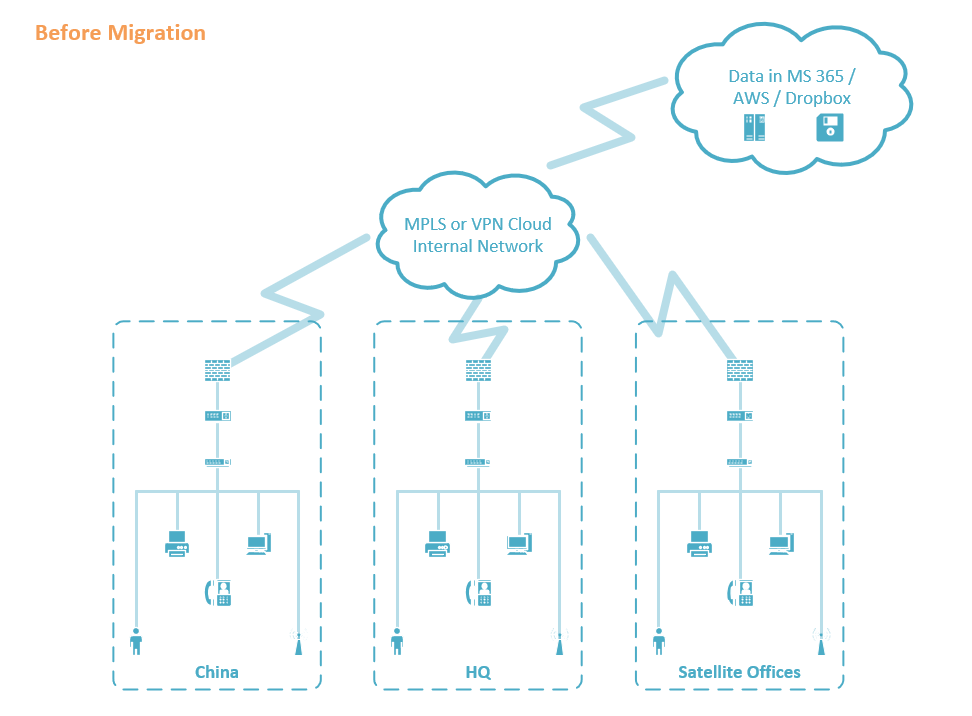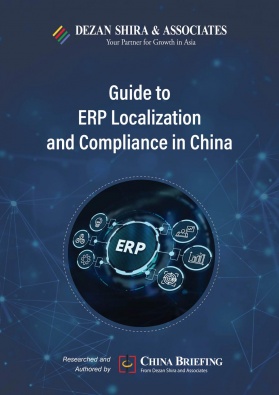Why Use a Separate Domain Name for your China Business
Establishing a separate domain for your China business is an important step in creating a lasting digital footprint in the country. Despite the challenges of managing multiple domains, using a different domain for the Chinese market has significant benefits, from improving IT and data compliance to improving the company’s accessibility or brand image in China. In this article, we outline the benefits of using separate China domain names.
Most companies have a global website for communicating their brand, products, and services to the world. Oftentimes, they also have an internal web domain for easy sharing of information and software resources across the company. While larger companies may need numerous websites for larger arrays of business lines, most SMEs that do business globally would be more than satisfied with just one single website and primary domain. In this article, we explain why companies that do business in China might want to rethink that strategy.
In the digital age, a company’s online presence is as crucial as its physical one, especially in a vast and varied market like China. Establishing a strong digital footprint requires thoughtful consideration of domain names for both websites and data services. This becomes particularly important given the unique challenges and opportunities presented by the Chinese market, including regulatory compliance, cybersecurity concerns, and the need for localized content.
In China, where internet regulations and user behavior significantly differ from other regions, the choice of domain names can be particularly important to a company’s success. Local domains can enhance accessibility, ensure compliance with local laws, and provide a better user experience.
In this article, we look at the following five aspects of segregating your public and private domains for China:
- Brand protection and website performance
- Improving your company’s network performance and cybersecurity
- Increased data compliance and control
- Strategic segmentation for marketing or future restructuring
- Challenges, considerations, and how to get started
Separating domains for better brand protection and website performance
Having separate domain names for your website and data services can safeguard your brand from cybersquatting and impersonation. It ensures that customers always reach the legitimate site, reinforcing trust and brand integrity.
A company might use “.cn” for its customer-facing website and a different domain for its data services to delineate clear boundaries between different facets of its online presence.
In this situation, a company may wish to separate domain names in this way.
- Customer-facing website: The company chooses the domain companyname.cn for its primary customer-facing website in China. This site hosts information about its products, services, customer support, and online store. By using the “.cn” domain, the company ensures that customers in China can easily identify the legitimate site.
- Data services domain: For its data services, which include APIs, data analytics, and backend services, the company uses the domain “companynamedata.cn” indicating the different services offered.
Having separate domain names for different services offers several advantages over using a subdirectory structure (such as “companyname.cn/data”). In addition to creating distinct identities for the different business segments, separate domains enhance security by creating isolated environments, ensuring that if one domain is compromised, the other remains secure. This approach allows for dedicated security measures tailored to the specific needs of each domain, whether it’s protecting against phishing for the customer-facing site or securing data transactions for backend services.
Enhanced website experience in China
Is your website available in China? How well does it perform locally?
Localized domain names can significantly improve the user experience by reducing latency issues and ensuring faster access to websites and services. Due to local internet regulations, cross-border internet traffic can be slow, meaning foreign website domains can suffer from slow loading, or at times even be inaccessible locally within China. A domestic website can therefore significantly improve customer satisfaction, improve brand image, and increase customer engagement.
Having a separate domain for local operations also allows a company to fully localize the website content for the Chinese market. This will ensure that a customer is immediately taken to a Chinese-language landing page when they enter the company’s website, rather than having to manually change the language. In addition, if done well, localization will also ensure that the website layout, aesthetic, and marketing materials are adapted to the local market, rather than simply translating and overlaying the foreign-language content onto the existing website. However, this is harder to do with a foreign-language subdomain, which will need to more strictly adhere to the original website’s layout and content.
For instance, a company providing technology services in China launches a dedicated website for the Chinese market, “companyname.cn”. This local domain helps address latency issues that Chinese users might experience when accessing the company’s main international site, companyname.com. The local domain ensures that users experience minimal latency, which contributes to a smoother and more efficient browsing experience.
In addition to improving performance, the company fully localizes the content on “companyname.cn” to cater specifically to the Chinese market. When users in China visit this site, they are automatically directed to a Chinese-language landing page, eliminating the need to manually switch from a foreign language. The website’s design, layout, and marketing materials are tailored to reflect local preferences and cultural nuances. For example, the site features local imagery, relevant product recommendations, and promotional offers that are only available in the Chinese market.
Additional considerations:
Localizing and ensuring consistent branding across multiple domains bears some challenges. Maintaining a cohesive brand image and message across various platforms requires attention to detail, while inconsistent branding can dilute the company’s identity and reduce the effectiveness of marketing efforts.
Maintaining consistent branding across multiple domains also requires a strategic approach. For instance, establishing detailed branding guidelines and ensuring all teams adhere to them can preserve the company’s identity and messaging.
Additional information regarding China-focused website splitting, Search Engine Optimization (SEO), and Pay-per-click (PPC) with organizations such as Baidu can be found in this webinar replay featuring Dezan Shira & Associates and Regroup China.
Use a separate domain for China to improve your company’s network
Employing domains for network systems and software in China that are segregated from the rest of a company’s global network, provides some important safeguards as well, particularly in the event of cyber breaches. In fact, many global providers structure their services this way, such as Microsoft, which hosts and runs its Azure and Office 365 services on entirely separate infrastructure, for compliance purposes as well as for performance and security reasons. Below are a few of the technical benefits of setting up your networks to use two domains.
Cybersecurity: Reduced attack surface and containment
Nearly any company can become a target of hacking or malware. By separating networks, the attack surface that hackers can exploit within one network is reduced. Each segment, the one inside China and the one outside China can each be fortified individually, making it harder for attackers or malware to move laterally across the network.
If a leak or intrusion does occur within a company’s network, an isolated network can also help prevent the spread of malware or an attack from one part of a network to another. If one segment is compromised, the segregation acts as a barrier, protecting the rest of the network.
Localized applications, monitoring, and detection
Generally, it’s easier to monitor and detect suspicious activities in smaller, segregated networks, and anomalies can be identified and addressed more quickly. This can be of additional value, because the software, services, and systems used in China are very unique in the country, compared with most countries around the world.
Network segmentation can improve overall performance by reducing congestion. Critical systems can be allocated more bandwidth, ensuring they operate efficiently.
A key case for both points was the recent CrowdStrike incident on July 19, 2024, which caused more than US$5 billion in direct damages to Fortune 500 companies alone. Companies affected needed to take quick action, such as these measures recommended by Asia-based IT provider, systemsGo. Yet despite the scale of this outage, which affected millions of computers globally, it had little effect in China, because common China software, services, and systems do not use the same Microsoft and CrowdStrike services that the rest of the world. The takeaway is that should a reverse situation arise, where a problem may emanate within China, a company would more easily be able to detect and resolve a locally occurring issue and manage the impacts on performance on their global networks.
How to segregate your networks
A recent whitepaper by systemsGo outlines how this is commonly approached by companies, from a network perspective. It provides a case study scenario of a private equity firm with operations in China and globally that aims to enhance the protection of its assets, data, users, and systems while maintaining cross-border collaboration. The case study highlights how systemsGo, a provider of IT infrastructure and support solutions for MNCs in Asia, segregated their networks from an IT standpoint, and helped the company improve their overall posture and performance.
Source: systemsGo White Paper 2024
Improving your data control and compliance with local regulations
China’s data and cybersecurity regulations mandate that personal information and important business operations data must be stored within the country’s territory. By setting up a local domain for data services, companies can ensure compliance with these regulations and avoid potential legal and operational risks.
For instance, the Personal Information Protection Law (PIPL) requires that all personal information collected or generated within China be stored within China’s territory. Meanwhile, the Cybersecurity Law (CSL) stipulates that both personal data and “important data” collected and generated by critical information infrastructure operators (CIIOs) during operations within China must be stored within China’s territory. Sensitive personal information, which includes a variety of data such as biometrics, medical information, and financial accounts, is subject to more stringent protection regulations.
Moreover, under the PIPL and related regulations, companies must undergo various compliance procedures in order to transfer personal information and important data overseas. Importantly, overseas transfer of data includes scenarios in which an overseas employee remotely accesses data stored in China.
For these reasons, it is crucial for companies to segregate their corporate email domain, and possibly their intranet domain, to ensure they meet the stringent cybersecurity and data privacy laws. By having separate domains for these services, companies can better manage and secure their internal communications, safeguarding sensitive information from cyber threats and unauthorized access.
Additionally, segregating the corporate intranet and email domains can help delineate clear boundaries between different operational areas of the business, thus facilitating a structured approach to data governance and compliance. It also allows for more focused security measures and policies tailored to the nature of communication and data exchanged within the corporate emails, further aligning with regulatory requirements.
For instance, a company’s HR or customer support team may wish to set up a local email system specifically for its operations, such as hr@company.cn or support@companyname.cn. The “.cn” email systems could in this scenario handle all China HR and customer support-related communications, including the collection and management of employee and customer personal information, such as resumes, employment records, financial information, address, or any other information that can be used to identify an individual.
By using separate email systems, the company can ensure proper storage of all personal information collected and generated and apply focused security measures to protect sensitive information from cyber threats and unauthorized access.
Planning to segregate domains from a compliance perspective
Before separating domains, it is essential to assess your company’s compliance with China’s data privacy, cybersecurity, and related frameworks. For instance, examining your company’s data handling practices—how data flows throughout the organization—and considering the expectations of Chinese authorities can reveal critical approaches that might otherwise be overlooked during migration. In the article “Data Impact Assessment in China – How to Conduct a PIPIA,” we discussed the importance of performing a Data Protection Impact Assessment (DPIA) and other necessary measures.
Strategic segmentation for marketing or future restructuring
Marketing segmentation
Different domain names allow for targeted marketing and segmentation. Companies can tailor their content and services to specific audiences, enhancing the relevance and effectiveness of their marketing efforts. For example, a “.com.cn” domain might be used for a general audience, while a “.org.cn” could target non-profit activities or government-related information.
For instance, a company providing energy management solutions utilizes the domain “companyname.com.cn” for its general audience. This domain is dedicated to its commercial activities and provides information about its products, services, and corporate initiatives. The site features content tailored to consumers and businesses interested in eco-friendly technologies, offering product details, customer testimonials, and promotional campaigns. Through this domain, the company targets the broader market with marketing messages designed to appeal to a wide range of potential customers, ensuring that its content is both relevant and accessible.
Meanwhile, the company operates a separate domain, “companyname.org.cn”, specifically for its non-profit activities and collaborations with government agencies. This site focuses on its environmental advocacy efforts, community outreach programs, and partnerships with governmental organizations. The content on this website is tailored to stakeholders in the non-profit sector, including detailed reports on environmental impact, grant applications, and information about policy initiatives. The use of the “.org.cn” domain helps the company clearly distinguish its non-profit activities from its commercial operations, targeting a specific audience interested in environmental causes and public policy.
Strategic business moves
Separate domains can facilitate strategic business moves such as mergers, acquisitions, or partnerships. They provide the flexibility to redirect or integrate various online assets as the company evolves without disrupting existing user access or search engine rankings.
For instance, a growing technology company is preparing to acquire a smaller firm. The company has already strategically maintained separate domains for its various business units, using the domains “.cn” for its main brand in China, “.ai” for its artificial intelligence products, and so on.
When the acquisition is finalized, the company can simply create a new domain combining the two companies’ names to host the newly acquired company’s products and services while maintaining the original branding. This approach allows the company to integrate the new company into its broader business structure without disrupting existing user access or search engine rankings for either company.
Challenges, considerations, and how to get started
In summary, there are a number of options available to companies to help them better manage their internal network performance and security, their website performance, and their data compliance. It is important that companies consider these steps, particularly given the evolution of the cybersecurity, data compliance, website, applications, and intellectual property landscapes in China in the recent few years.
Taking any of these measures will also require time, planning, and some cost.
Setting up separate domains for different markets and company operations can require weeks or months to implement and can add costs due to changes in configuration and new domain registration, security certificates, hosting, and ongoing maintenance. Some added administrative burdens should be considered as well, such as managing and updating content, ensuring security protocols, and maintaining compliance with regulations across multiple domains demand considerable resources and coordination. Yet the increased costs of managing multiple domains can be mitigated, using appropriately selected and scaled solutions.
Taking practical steps
For most enterprises to consider such changes, it would require alignment, planning, and recommendations to be exchanged between their global or regional IT teams, and a local internal or external IT team with strong China knowledge.
Companies can decide on which aspects to segregate by considering:
- A company’s wider enterprise’s internal and external strategy, network assets, model, and architecture;
- The options that are available and best cater to the company’s needs, budget, performance, and risk management objectives.
While some companies should pursue wide and deep audits or assessments before any directions are considered, smaller organizations with simpler networks can often assess, plan, and implement selected key measures as well-known best practices, with only a few initial consultations. This can begin in many cases, by sharing key company considerations and goals with a reputable IT firm, and requesting to understand what approaches they provide and would recommend,
This article was written by China Briefing, with guidance from the technology experts at systemsGo and Dezan Shira & Associates.
About Us
China Briefing is one of five regional Asia Briefing publications, supported by Dezan Shira & Associates. For a complimentary subscription to China Briefing’s content products, please click here.
Dezan Shira & Associates assists foreign investors into China and has done so since 1992 through offices in Beijing, Tianjin, Dalian, Qingdao, Shanghai, Hangzhou, Ningbo, Suzhou, Guangzhou, Haikou, Zhongshan, Shenzhen, and Hong Kong. We also have offices in Vietnam, Indonesia, Singapore, United States, Germany, Italy, India, and Dubai (UAE) and partner firms assisting foreign investors in The Philippines, Malaysia, Thailand, Bangladesh, and Australia. For assistance in China, please contact the firm at china@dezshira.com or visit our website at www.dezshira.com.
- Previous Article China Joint Venture: 7 Considerations to Reach a Successful JV Agreement
- Next Article China Monthly Tax Brief: July 2024

